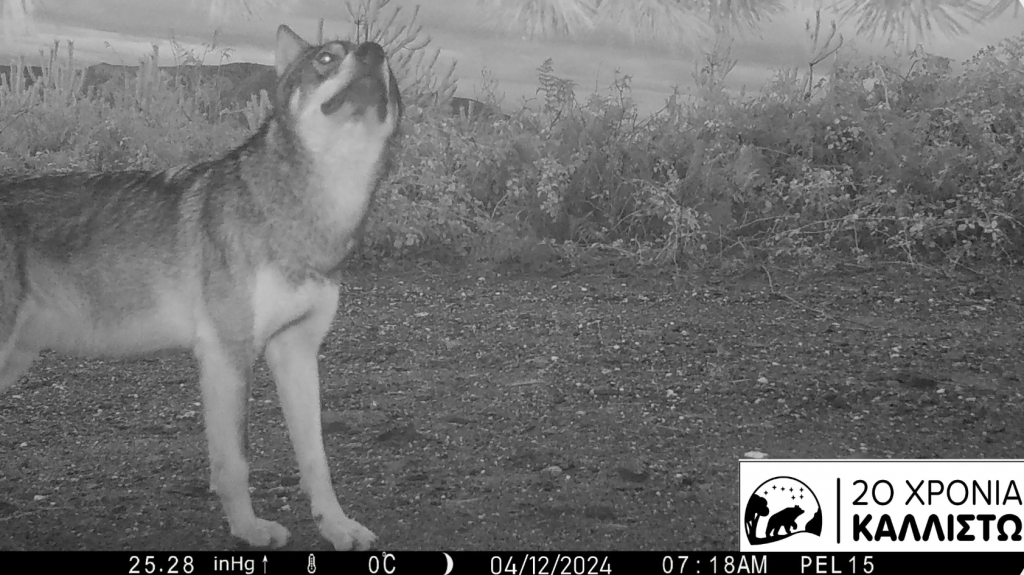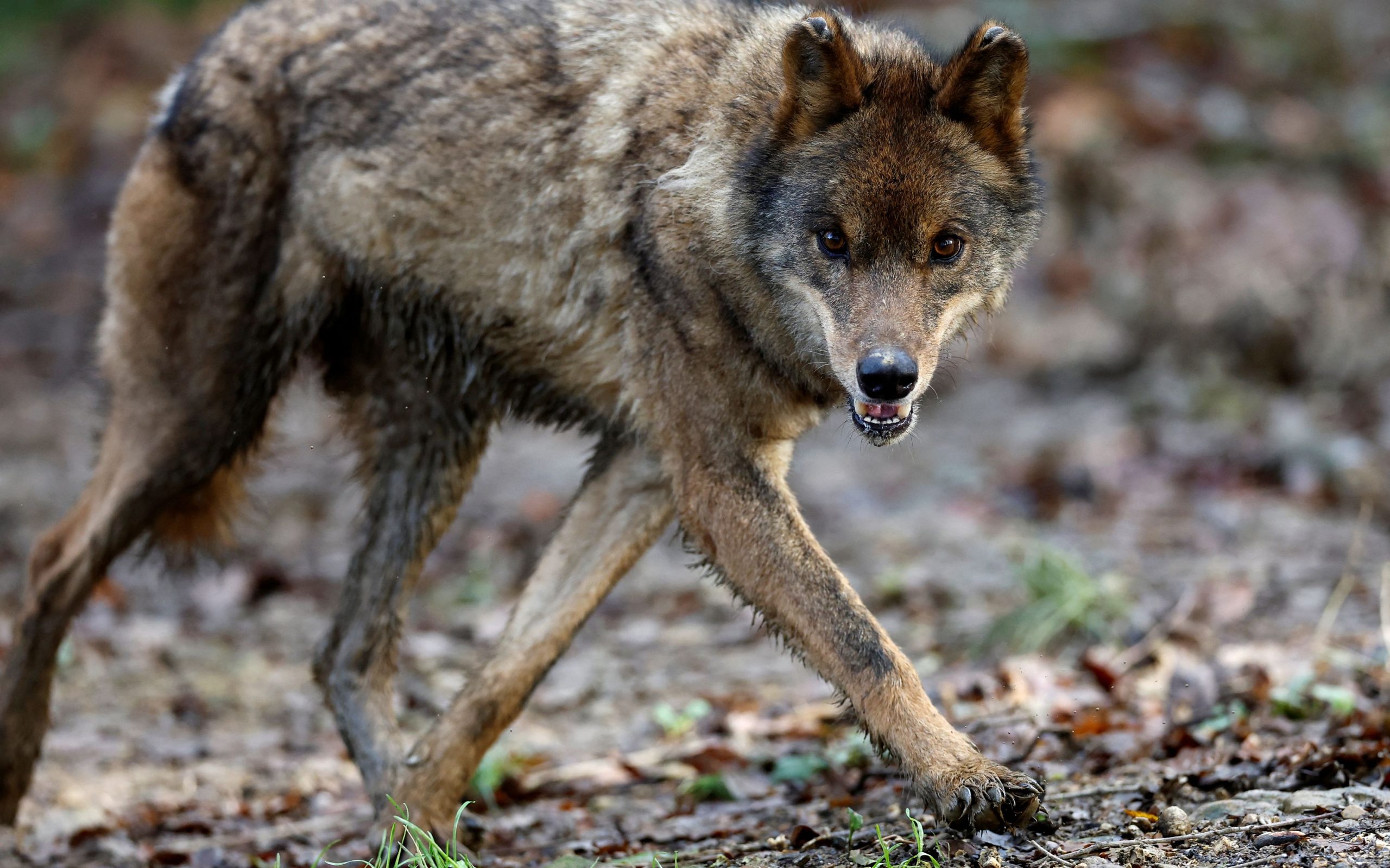The environmental organization Callisto has confirmed the presence of wolves in the Taygetus region of the Peloponnese, marking the first sighting in the area since 1930. This breakthrough follows reports in October of a wolf attack that resulted in the deaths of 40 goats and a shepherd dog in Alagonia, Messinia.
Monitoring Wolves in the Peloponnese
Callisto initially conducted monitoring activities in the Peloponnese between 2019 and 2022. These efforts, covering 2,100 square kilometers in the northern Peloponnese (including Erymanthos, Chelmos, and Ziria mountains), involved surveying 180 kilometers of forest roads and deploying 14 automatic cameras operating around the clock for two months. However, no biological indicators or visual evidence of wolves were detected during this period.

Photo credit: Callisto
A second round of fieldwork, carried out in November 2024, was prompted by the October attack in Alagonia. This investigation, conducted in collaboration with the Wildlife Protection and Care Center (KE.P.P.A.Z) in Messinia, confirmed the presence of wolves through biological evidence and camera footage, which captured a pack of nine wolves (four adults and five juveniles). Additionally, a local hunting association provided a photograph of a dead wolf killed in a vehicle collision in Taygetus.
Local Concerns and Livelihood Challenges
The confirmed presence of wolves has raised concerns among local residents and shepherds. Speaking to ERT, a shepherd who lost his livestock highlighted his struggles, noting he is the last remaining shepherd in the area.
The shephard called for swift action from the Greek government to support shepharding in the area, questioning the viability of his livelihood given the increasing challenges posed by wolves and other pressures on the trade.
Over the past few years, shepherding in Greece has faced increased pressures on account of climate change, the arrival of coyotes, and diseases affecting small ruminants.

FILE PHOTO: George Andrianakis milks a sheep in the yard of his farm in the village of Stafania in the Peloponesse area of Greece, March 21, 2012. REUTERS/Cathal McNaughton/File Photo
Recently, the EU has downgraded the protection status of Europe’s wolves, to the anger of conservation and protection organizations. The move was spearheaded by Ursula von der Leyen herself, who made it her personal initiative following the killing of her horse by wolves.
Understanding ‘Surplus Kills’
The large-scale killing of livestock in Alagonia raises questions about wolf behavior. According to the International Wolf Center, wolves sometimes engage in “surplus killing,” where they kill more prey than they can consume. This behavior is often triggered by conditions such as high prey density or limited escape options for livestock.
Surplus killing may also occur as wolves defend their territory or as pups practice hunting. Additionally, human interference or the presence of other predators may cause wolves to abandon their kills prematurely. It is, however, considered to be a rare behavior.
While surplus killing may seem wasteful, it has ecological benefits, providing food for scavengers and regulating prey populations. Callisto has not commented on the reasons behind this specific incident.
Callisto’s Role in Wolf Conservation
Callisto is actively involved in a Ministry of Environment and Energy (ΥΠΕΝ) project titled “Monitoring and Evaluation of the Conservation Status of Mammal Species (excluding marine mammals) of Community and National Interest in Greece” (2022–2025) under EU Directive 92/43. The organization is responsible for evaluating the conservation status of the wolf population (Canis lupus) across most of its range in Greece.
Callisto’s efforts are also part of a WWF-coordinated project titled “Preserving Iconic Mediterranean Species in Greece through Collaboration Among Environmental Organizations.” This initiative has completed sampling in 50 mainland areas and is conducting preliminary investigations into wolf presence in the Peloponnese.




